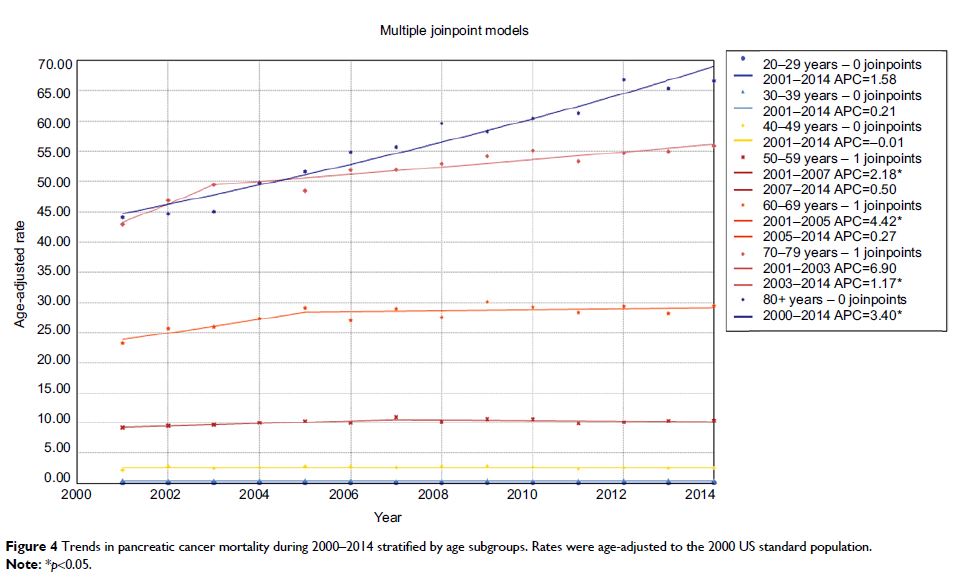108605
论文已发表
注册即可获取德孚的最新动态
IF 收录期刊
- 3.4 Breast Cancer (Dove Med Press)
- 3.2 Clin Epidemiol
- 2.6 Cancer Manag Res
- 2.9 Infect Drug Resist
- 3.7 Clin Interv Aging
- 5.1 Drug Des Dev Ther
- 3.1 Int J Chronic Obstr
- 6.6 Int J Nanomed
- 2.6 Int J Women's Health
- 2.9 Neuropsych Dis Treat
- 2.8 OncoTargets Ther
- 2.0 Patient Prefer Adher
- 2.2 Ther Clin Risk Manag
- 2.5 J Pain Res
- 3.0 Diabet Metab Synd Ob
- 3.2 Psychol Res Behav Ma
- 3.4 Nat Sci Sleep
- 1.8 Pharmgenomics Pers Med
- 2.0 Risk Manag Healthc Policy
- 4.1 J Inflamm Res
- 2.0 Int J Gen Med
- 3.4 J Hepatocell Carcinoma
- 3.0 J Asthma Allergy
- 2.2 Clin Cosmet Investig Dermatol
- 2.4 J Multidiscip Healthc

2000 - 2014 年胰腺癌发病率和死亡率呈上升趋势
Authors Wu W, He XK, Yang L, Wang Q, Bian X, Ye J, Li Y, Li L
Received 21 December 2017
Accepted for publication 5 April 2018
Published 9 July 2018 Volume 2018:10 Pages 789—797
DOI https://doi.org/10.2147/CLEP.S160018
Checked for plagiarism Yes
Review by Single-blind
Peer reviewers approved by Dr Justinn Cochran
Peer reviewer comments 3
Editor who approved publication: Professor Vera Ehrenstein
Background: The
morbidity and mortality of pancreatic cancer vary considerably around the
world. The aim of this study was to characterize and evaluate recent changes in
incidence and incidence-based mortality in the USA.
Methods: Incidence and incidence-based mortality data were based on the 18
Surveillance, Epidemiology, and End Results (SEER) registries through SEER*Stat
software. We adopted joinpoint regression to analyze the temporal trends
stratified by age, gender, ethnicity, stage, tumor site, and size.
Results: Based on 18 SEER data sets, the age-adjusted incidence of
pancreatic cancer increased from 11.85/100,000 in 2000 to 14.70/100,000 in
2014, increasing by an average annual percentage change (AAPC) of 1.6 (95% CI
1.5–1.8, p <0.05). The incidence-based
mortality also increased, from 9.96/100,000 in 2001 to 12.96/100,000 in 2014,
increasing by an AAPC of 1.9 (95% CI 1.3–2.5, p <0.05).
However, we observed a deceleration in mortality since 2005, with the annual
percentage change decreasing from 4.1 (2001–2005) to 1.0 (2005–2014). These
increasing trends in pancreatic cancer were observed in most subgroups
(stratified by age, gender, ethnicity, stage, tumor site, and size).
Conclusion: The incidence and mortality rates of pancreatic cancer in the USA
have increased significantly since 2000, highlighting the need for increased
preventive, screening, and surveillance efforts.
Keywords: epidemiology, pancreatic cancer, incidence, mortality, trend, SEER
